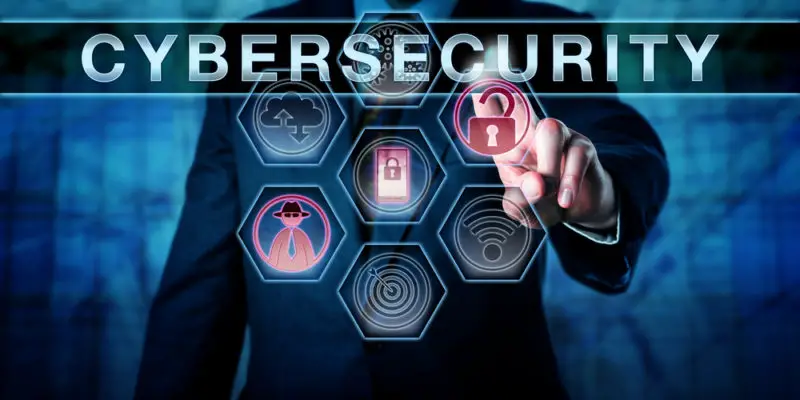The growing digitization of industrial processes necessitates a comprehensive understanding of the IEC 62443 standard, a pivotal framework for managing cybersecurity risks in industrial automation and control systems.
This article elucidates the concept of IEC 62443 risk assessment and its relevance in the contemporary landscape of networked industrial systems.
It highlights the importance of network architecture considerations and the potential consequences of unmitigated cyber risks.
The article further provides an overview of the cyber risk assessment process, equipping readers with a fundamental grasp of this vital aspect of industrial cybersecurity.
Exploring this topic, one can gain insights into the evolving challenges and solutions in industrial cybersecurity and risk management.

Definition of IEC 62443 Risk Assessment
The IEC 62443 Risk Assessment significantly benefits industrial automation and control systems (IACS).
Primarily, it provides a structured, systematic approach to identifying, analyzing, and evaluating potential risks, thereby enhancing the security and reliability of processes.
Furthermore, it facilitates the prioritization of risk mitigation measures, ensuring optimal resource allocation and fostering a proactive culture of cybersecurity within the organization.
Benefits of IEC 62443 Risk Assessment
Implementing an IEC 62443 risk assessment provides numerous benefits, including improved cybersecurity, enhanced system integration, and reduced potential threats to industrial automation and control systems.
It offers a systematic approach to identifying and mitigating risks, thus fortifying the network against cybersecurity risks.
| Benefits of IEC 62443 Risk Assessment | It enhances the security risk assessment and management process, strengthening the defense against cyber threats. |
|---|---|
| Improved Cybersecurity | It enhances the security risk assessment and management process, strengthening the defence against cyber threats. |
| Enhanced System Integration | The assessment promotes better integration of control systems, ensuring secure and efficient operations. |
| Reduction in Potential Threats | IEC 62443 risk assessment helps reduce potential threats’ consequences and safeguard industrial automation and control systems. |
Implementing IEC 62443 risk assessments offers a comprehensive approach to managing cyber risk assessment, ensuring robust and secure control systems.
Control Systems and Industrial Automation Overview
Control Systems and Industrial Automation represent a crucial facet of modern manufacturing and production processes, driving efficiency and precision in many industries.
These systems vary broadly in their design and function, ranging from Supervisory Control and Data Acquisition (SCADA) systems, which allow for centralized monitoring and control of industrial processes, to Distributed Control Systems (DCS), which decentralize control functions to enhance reliability and flexibility.
On the other hand, industrial automation leverages technologies such as robotics, artificial intelligence, and machine learning to automate complex industrial tasks, thereby enhancing productivity, reducing human error, and facilitating continuous operation.
What are Control Systems and Industrial Automation?
In industrial operations, Control Systems and Industrial Automation use various control systems for operating equipment such as machinery, factory processes, boilers, and heat-treating ovens, among others, with minimal or reduced human intervention.
These systems, critical assets in an industrial environment, rely heavily on network architectures designed with automation cybersecurity standards, technical requirements, and cyber security controls.
This operational environment demands a unique engineering discipline to manage potential risks.
| Control Systems | Industrial Automation | Cyber Security Controls |
|---|---|---|
| Machinery operation | Minimal human intervention | Automation cybersecurity standards |
| Asset management | Network architecture | Technical requirements |
| Industrial environment | Operational efficiency | Industrial specific controls |
| Engineering discipline | Risk management | IEC 62443 standards |
Thus, it’s evident that integrating control systems and industrial automation is crucial in today’s industrial operations.
Types of Control Systems and Industrial Automation
Various control systems and industrial automation classifications exist, each with unique features and applications designed to enhance operational efficiency and safety in diverse industrial environments.
The IEC 62443 risk assessment is crucial in evaluating these systems’ security requirements.
- Discrete Control Systems: Utilize binary on-off states, often used in assembly lines and material handling systems. Their cybersecurity risk assessments are vital to ensuring operational integrity.
- Continuous Control Systems: Regulate variables continuously, such as temperature and pressure in a manufacturing plant. Asset management in these systems is crucial.
- Distributed Control Systems (DCS): Ideal for large, geographically dispersed operations. They require comprehensive risk assessment processes.
- Supervisory Control and Data Acquisition (SCADA): Primarily used in utility sectors, these systems need robust industrial control and automation security measures.
Network Architecture Considerations
Industrial environments utilize various networks with distinctive characteristics and requirements, thus necessitating a comprehensive understanding of their distinct attributes.
The intrinsic components necessary for secure networks include but are not limited to, firewalls, intrusion detection systems, and secure gateways.
This will critically examine these aspects, explicating the importance of secure network architecture in industrial automation and control systems.
Types of Networks Used in Industrial Environments
Exploring the landscape of industrial environments, one can identify several types of networks utilized, each with unique configurations and vulnerabilities under the IEC 62443 risk assessment framework.
These networks include enterprise, Fieldbus, control, and safety networks. Each network type presents unique cyber threats, demanding a tailored cybersecurity management approach.
| Network Type | Cybersecurity Considerations |
|---|---|
| Enterprise | Industrial control systems require a specific risk assessment methodology. |
| Fieldbus | Industrial control systems require specific risk assessment methodology. |
| Control | Cyber threats could disrupt control processes, necessitating robust security measures. |
| Safety | Efficient cybersecurity management is essential to prevent hazards. |
Understanding the types of networks in industrial environments is key to performing a comprehensive IEC 62443 risk assessment.
This knowledge aids in identifying potential vulnerabilities and implementing appropriate security measures.
Components Necessary for Secure Networks
Ensuring the security of networks within industrial environments necessitates a comprehensive understanding of the key components that contribute to robust cyber defences.
The IEC 62443 risk assessment provides guidelines for identifying security vulnerabilities and managing cyber risk.
The components necessary for secure networks include:
- Physical security measures: Physical security inhibits unauthorized personnel from accessing critical assets, thereby reducing asset vulnerabilities.
- Appropriate firewall rules: Firewall rules are crucial for managing traffic and blocking potential cyber-attacks.
- Robust access controls ensure that only authorized users and systems can access and manipulate network resources.
Collectively, these components form a layered defence strategy, aiding in mitigating cyber threats and bolstering the resilience of industrial networks.
Potential Consequences of Unmitigated Cyber Risks
Unaddressed cyber risks‘ potential ramifications span diverse dimensions, with profound implications for businesses and their stakeholders.
Such unmitigated threats can damage assets and corporate reputation, privacy breaches with attendant financial losses, and disruptions to normal business operations, resulting in downtime and service outages.
Further ramifications may involve compliance violations, instigating legal and regulatory consequences, and data theft or manipulation, which can compromise the integrity of critical information and related systems.
Damage to Assets and Reputation
Assessing the potential for damage to assets and reputation remains a critical aspect of the IEC 62443 risk assessment.
It provides an in-depth understanding of the vulnerabilities that could significantly impact an organization’s performance and standing in the industry.
The assessment identifies potential vulnerabilities in both cyber assets and physical assets. It determines the actual threats present in the threat environment.
After considering risk mitigation alternatives, analysis of the residual risk helps in understanding the extent of potential damage.
The corporate risk criteria are leveraged to evaluate these threats’ extent and devise effective strategies to minimize potential harm.
Therefore, an effective IEC 62443 risk assessment helps safeguard against damage to assets and reputation. It reinforces business sustainability.
Privacy Breaches and Financial Losses
Transitioning from analysing potential damage to assets and reputation, the focus now shifts to privacy breaches and financial losses.
The threats posed by privacy breaches in the IEC 62443 risk assessment context are significant, with potential consequences including unmitigated risk and large-scale financial losses.
The level of risk arising from these cybersecurity issues requires a detailed risk analysis to identify exploitable vulnerabilities.
A robust risk assessment tool can be instrumental in quantifying these risk levels, providing a more comprehensive understanding of the associated impacts.
This approach is critical in financial losses, where the cost of privacy breaches can cripple organizations financially.
Thus, applying IEC 62443 standards becomes imperative in mitigating such risks and protecting the organization from devastating consequences.
Business Disruptions, Downtime, and Service Outages
Cybersecurity breaches, as outlined by the IEC 62443 framework, can also lead to significant business disruptions, downtime, and service outages, causing not only monetary losses but also impacting an organisation’s overall productivity and efficiency.
From a cybersecurity perspective, the following points reveal the potential impacts of such breaches:
- Business disruptions: Disruption in the regular workflow leads to bottlenecks and inefficiencies.
- Downtime: Halting services or operations due to a cybersecurity incident affecting productivity.
- Service outages: Temporary unavailability of certain services, potentially causing customer dissatisfaction.
- Incident management: Adhoc services are required to manage and recover from a cybersecurity incident, incurring additional costs.
- High-level risk assessment: A risk assessment matrix and adequate mitigation actions are needed to prevent future occurrences.
Compliance Violations
Non-compliance with regulatory and industry standards in the digital domain can result in severe penalties, including hefty fines and reputational damage, significantly impacting an organization’s bottom line and stakeholder trust.
When identified through an IEC 62443 risk assessment, compliance violations can highlight relevant threats to an organization’s security policies.
Conducting comprehensive risk analyses, organizations can determine the risk score for each identified threat and evaluate whether they constitute acceptable risks. As stipulated by the IEC 62443 standard, basic security requirements provide a roadmap for organizations to mitigate these threats.
Applying IEC 62443 can help develop action items for addressing identified risks, ensuring adherence to industry standards and avoiding penalties associated with non-compliance.

Data Theft or Manipulation
Data theft or manipulation significantly threatens an organization’s digital assets and operations.
It can result in financial loss and damage to the organization’s reputation. To protect against this threat, asset owners must adhere to the control requirements specified by IEC 62443.
One potential threat vector is social engineering. This type of attack can lead to unauthorized access to applications and data.
Organizations should employ rigorous assessment approaches to mitigate the risk of such incidents. These approaches can help identify vulnerabilities and ensure appropriate measures are taken to address them.
Regular checks and audits are essential to maintaining compliance with control requirements.
These measures help ensure that the organization’s systems and processes are secure and minimise the risk of data theft or manipulation.
Implementing these control requirements, organizations can safeguard their digital assets, preserve their integrity, and maintain operational efficiency.
Cyber Risk Assessment Process Overview
Understanding the intricacies of the IEC 62443 risk assessment involves a comprehensive overview of the cyber risk assessment process, which entails the systematic identification, evaluation, and prioritization of potential vulnerabilities and threats to the security of an organization’s information system.
This process is crucial in anticipating and mitigating cyber incidents that could lead to data theft or manipulation in the OT environment. A successful attack by a threat agent could have critical consequences, hence the importance of a risk matrix in this lifecycle.
Different concepts, resources, and approaches are utilized to ensure the robustness of the process.
| Concepts | Resources | Approaches |
|---|---|---|
| Identification of vulnerabilities | Risk Matrix | Systematic Evaluation |
| Prioritization of threats | OT Environment | Anticipation of cyber incidents |
| Mitigation of cyber incidents | Threat Agent | Robustness of the process |
| Consequences of a successful attack | Lifecycle | Data Theft or Manipulation |
| Comprehensive overview of the process | IEC 62443 | Security of Information System |
Frequently Asked Questions
What are the specific qualifications required to conduct an IEC 62443 risk assessment?
Specific qualifications to conduct an IEC 62443 risk assessment include knowledge of industrial automation and control systems, an understanding of cybersecurity, and familiarity with IEC 62443 standards and risk assessment methodologies.
How often should an IEC 62443 risk assessment be performed for a company?
The frequency of performing an IEC 62443 risk assessment for a company is typically determined by the company’s risk tolerance and operational changes. However, it is generally recommended to conduct this assessment annually.
What are the costs associated with implementing the IEC 62443 standard in a business?
Implementing the IEC 62443 standard in a business involves costs related to training, system upgrades, software purchases, consultation services, and potentially increased cybersecurity insurance premiums. Exact costs vary based on business size and specific needs.
Can the IEC 62443 risk assessment standard be applied to non-industrial sectors such as healthcare or finance?
The IEC 62443 standard, although designed for industrial control systems, can be adapted for non-industrial sectors.
Its risk assessment and system protection principles apply to healthcare, finance, and other sectors.
What are some real-world examples of companies that have successfully implemented the IEC 62443 standard?
While specific company names are often confidential, numerous organizations across various sectors, including energy, manufacturing, and transportation, have successfully implemented the IEC 62443 standard to enhance their cybersecurity strategies.

Conclusion
The IEC 62443 risk assessment is crucial in control systems and industrial automation. The potential consequences of unmitigated cyber risks underscore the importance of network architecture considerations.
Rigorous and systematic cyber risk assessment processes, as delineated by the IEC 62443 standard, thus emerge as critical defensive measures.
Therefore, a deep understanding of this standard benefits industrial automation and control systems stakeholders.

Chris Ekai is a Risk Management expert with over 10 years of experience in the field. He has a Master’s(MSc) degree in Risk Management from University of Portsmouth and is a CPA and Finance professional. He currently works as a Content Manager at Risk Publishing, writing about Enterprise Risk Management, Business Continuity Management and Project Management.

